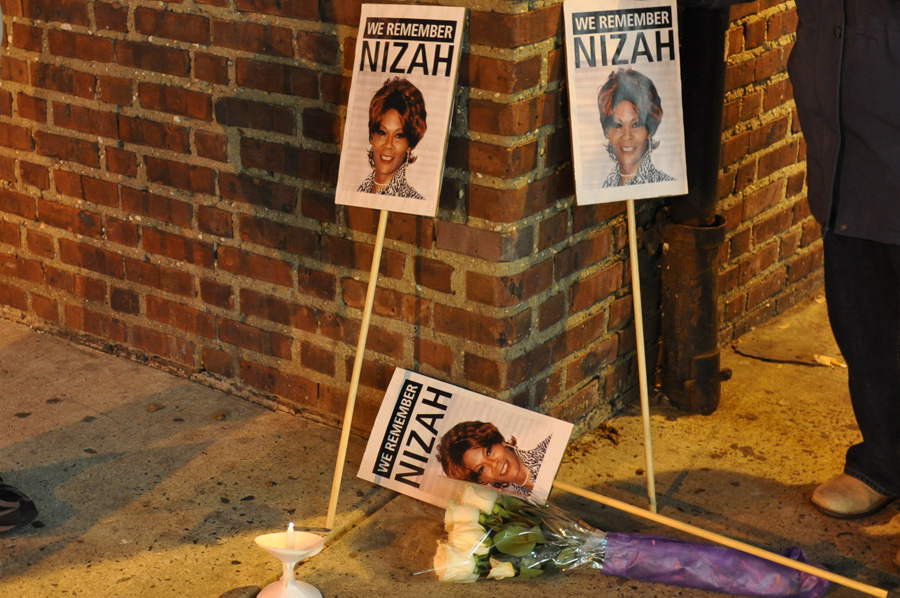A key 911 transmission in the Nizah Morris case could clarify whether gender confusion between responding officers delayed a criminal investigation into Morris’ fatal head wound.
The transmission is noted in dispatch records released by the city Law Department in 2008, but investigators refuse to disclose its contents.
Morris was a trans woman found at 16th and Walnut streets, unconscious and bleeding from her forehead, shortly after a courtesy ride from Officer Elizabeth Skala. Morris died two days later, on Dec. 24, 2002, from complications due to a fractured skull. Her homicide remains unsolved.
The 911 transmission at issue took place at 4:02 a.m. Dec. 22, about 45 minutes after Skala embarked on the courtesy ride.
Dispatch records indicate Skala said something over police radio at 4:02 that ended a connection at the 911 call center between Skala’s ride recipient and a “hospital case” at 16th and Walnut.
Once that connection ended, Morris no longer was considered a “hospital case” transported by police. Responding officers no longer had an obligation to write a report about Morris’ courtesy ride and subsequent head injury.
Only if Morris were treated as a “hospital case” transported by police — not medics — would such documentation be expected.
Instead, Morris was treated as a slip-and-fall victim transported to a hospital by medics. As a result, vital evidence, including Morris’ clothing, was lost or discarded.
A cursory probe by a detective easily could have debunked the slip-and-fall theory, as Morris was found on her back with a wound on her forehead.
But no detective was summoned, and the incident wasn’t investigated as a potential crime until several days later.
Police reports indicate Officer Thomas Berry miscommunicated with Skala when alluding to Morris as “transsexual” while Morris exited Skala’s vehicle at 15th and Walnut.
While both officers realized the person exiting Skala’s vehicle was transgender, Berry apparently didn’t clarify to Skala that he thought the person was post-operative, and that he would refer to her as a female over police radio if a future incident arose.
A few minutes later, when Berry responded to Morris at 16th and Walnut, he referred to her as a “DK [drunken] female” over police radio.
But according to police records, Skala believed Morris was pre-operative and referred to the victim as a male after her head injury, which occurred about 3:25 a.m.
If at 4:02 Skala told a dispatcher she transported a drunken male to 15th and Walnut, that would have broken the dispatcher’s connection with Berry’s drunken female at 16th and Walnut.
In 2012, Common Pleas Judge Idee C. Fox denied PGN’s request to order the District Attorney’s Office to release the 4:02 transmission and other missing 911 transmissions in the Morris case.
During a probe by the city’s Police Advisory Commission, the D.A.’s Office said its only 911 transmissions pertaining to the Morris incident were provided by PGN. But the D.A.’s Office didn’t provide an affidavit under penalty of perjury to verify that assertion.
Advocates for Morris continue to seek state and/or federal probes of her homicide, citing concerns of a local cover-up.
